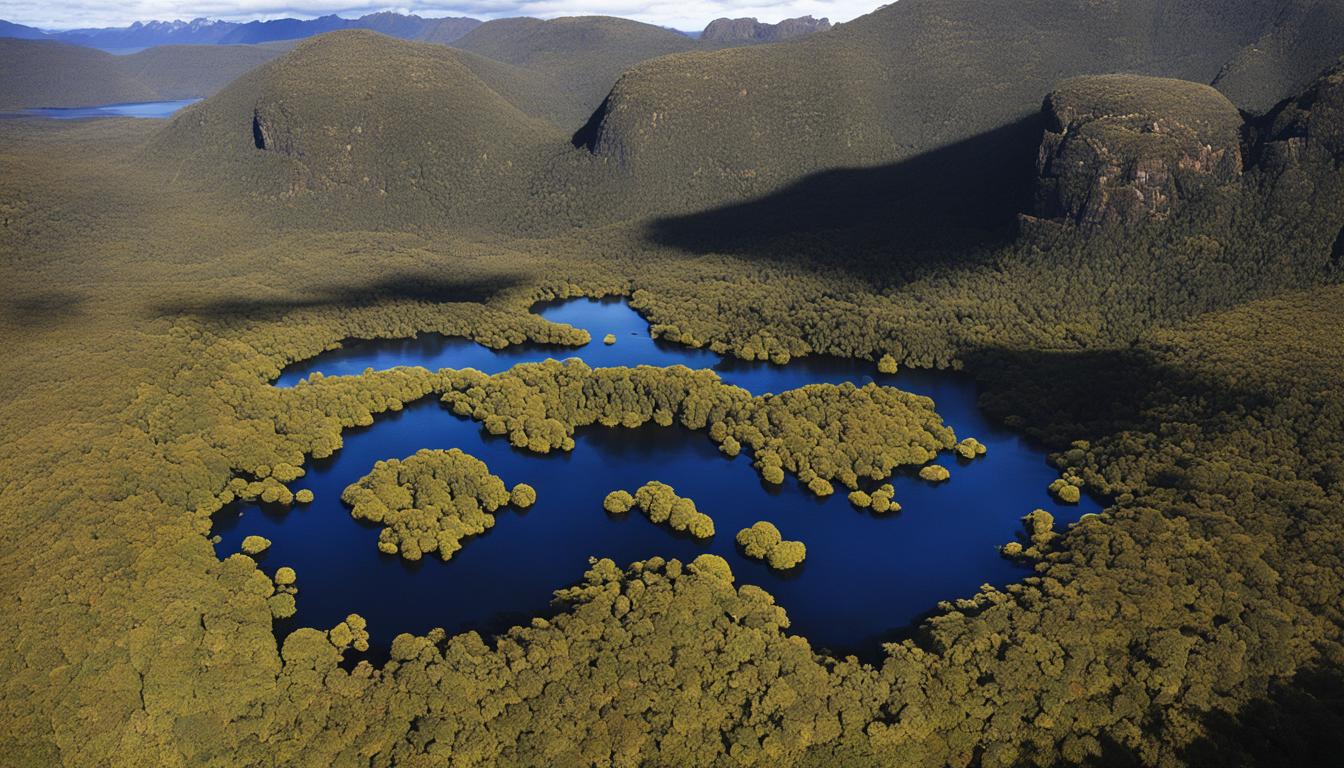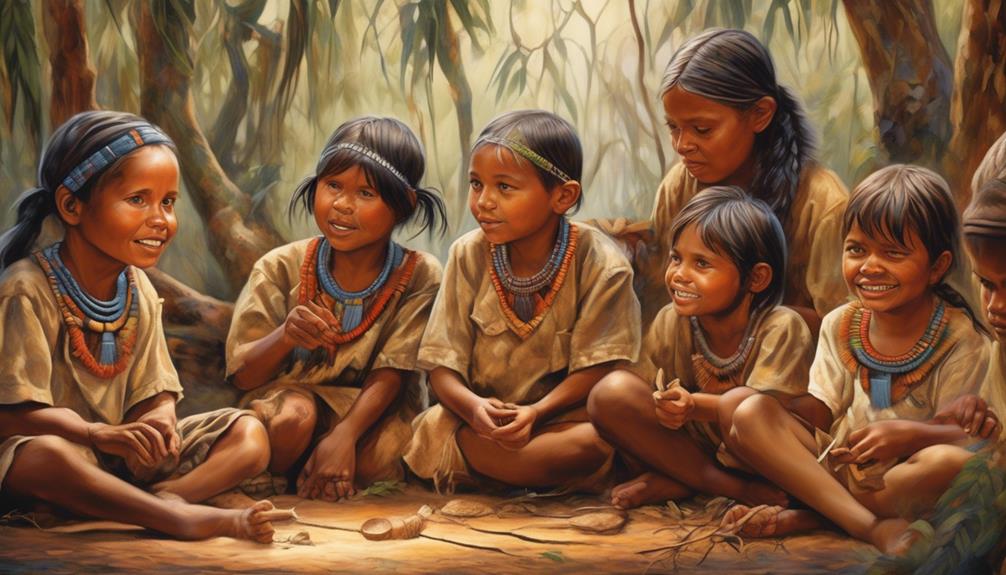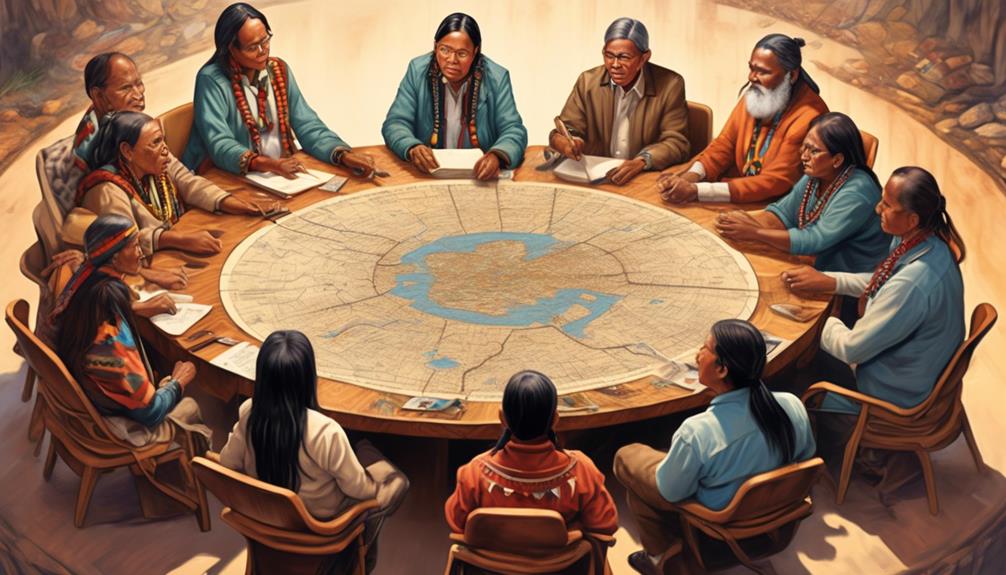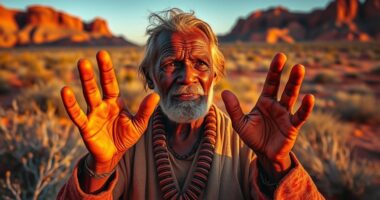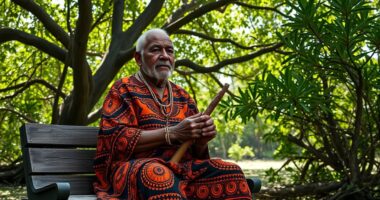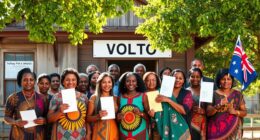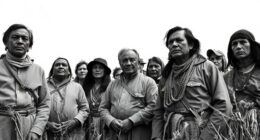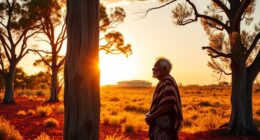Hello, language enthusiasts! Today, we are exploring the revival of the palawa language, a Tasmanian Aboriginal language that has experienced a remarkable resurgence. Join us as we uncover the passion and tactics that have sparked the revival of this indigenous language of Tasmania.
The palawa kani language, meaning “Tasmanian Aboriginal people speak,” is a reconstructed language that has emerged from the surviving spoken and written remnants of the original Tasmanian languages. Led by dedicated individuals and organizations like the Tasmanian Aboriginal Centre and the palawa kani research project, efforts to revive and restore this rich cultural heritage have gained momentum.
The Tasmanian Aboriginal people, such as Theresa Sainty, Jenny Longey, and June Sculthorpe, have played instrumental roles in the preservation and revitalization of the palawa language. Through initiatives like the Tasmanian Aboriginal Cultural Language Program, they have worked tirelessly to pass on their knowledge, revive cultural practices, and ensure the language thrives once again.
Key Takeaways:
- The palawa kani language is a reconstructed language derived from the original Tasmanian languages.
- The Tasmanian Aboriginal Centre and the palawa kani research project are leading efforts to revive and restore the language.
- Individuals like Theresa Sainty, Jenny Longey, and June Sculthorpe have made significant contributions to language revitalization.
- The Tasmanian Aboriginal Cultural Language Program plays a vital role in preserving and passing on indigenous knowledge.
- The revival of the palawa language is an essential part of the cultural survival and revitalization of the Tasmanian Aboriginal community.
The History of Tasmanian Aboriginal Languages
Before British colonization, there were approximately 250 Indigenous Australian languages and dialects spoken across the country. In Tasmania, the Tasmanian Aboriginal people spoke between eight and 12 different languages. These languages were documented in colonial records and through the efforts of linguists like George Augustus Robinson, who recorded over 4,500 Tasmanian Aboriginal words.
Unfortunately, the cultural disruption caused by colonization resulted in the loss of many of these languages. However, there is now a growing movement to revive and revitalize the Tasmanian Aboriginal languages, including efforts to preserve and teach the languages to future generations.
This table provides an overview of the different Tasmanian Aboriginal languages and their current status:
| Language | Status |
|---|---|
| Language A | Extinct |
| Language B | Endangered |
| Language C | Revived |
| Language D | Endangered |
Efforts such as language revival programs, cultural events, and educational initiatives are helping to keep these languages alive and ensure the preservation of Tasmanian Aboriginal culture. By reclaiming and revitalizing our ancestral languages, we are strengthening our cultural identity and reconnecting with our rich linguistic heritage.
Reviving the Palawa Language
“Language is an important aspect of our cultural revival. It is the key to understanding and preserving our heritage.” – Theresa Sainty
One of the most significant language revival efforts is focused on the Palawa language, also known as Palawa kani. Palawa kani is a reconstructed language that has emerged from the surviving remnants of the original Tasmanian languages.
The Palawa kani language is being embraced by members of the Tasmanian Aboriginal community and is being used in various contexts, including education, ceremonies, and official functions. It plays a crucial role in the preservation and celebration of Tasmanian Aboriginal culture.
The revival of the Palawa language is a testament to the resilience and determination of the Tasmanian Aboriginal community. It is a powerful tool for cultural revival and a means of strengthening our connection to our ancestors and our land.
Join us in our continued efforts to revive and preserve the Tasmanian Aboriginal languages and honor the rich heritage of our people.
The Resurrection of palawa kani
The palawa kani language, meaning “Tasmanian Aboriginal people speak,” is a reconstructed language that has emerged from the surviving spoken and written remnants of the original Tasmanian languages. The written form of palawa kani only uses lowercase letters, following a decision by the Tasmanian Aboriginal Centre. This language has been embraced by some members of the Tasmanian Aboriginal community and is being used in various contexts, including education, ceremonies, and official functions.
“Language and culture are deeply interconnected. The revitalization of palawa kani is an essential step in reclaiming our identity as Tasmanian Aboriginal people. It allows us to express ourselves, share our stories, and connect with our ancestors.”
– Theresa Sainty, Tasmanian Aboriginal community member
The resurrection of palawa kani is a result of dedicated efforts by the Tasmanian Aboriginal Cultural Language Program and the palawa kani research project. These initiatives have focused on collating and analyzing existing linguistic resources, engaging with community members, and developing teaching materials to ensure the language’s survival and growth.
Writing System and Pronunciation
The writing system of palawa kani is based on phonology and grammar patterns found in Tasmanian Aboriginal languages. It uses a practical and accessible approach, making it easier for both fluent speakers and learners to use and understand. The pronunciation of palawa kani has been carefully reconstructed using the available linguistic data, working closely with community members who have ancestral knowledge of the language.
Integration into Education and Community Life
Recognizing the importance of language revival in preserving cultural heritage, the use of palawa kani has been incorporated into educational institutions and community programs across Tasmania. It is taught in schools, helping to instill a sense of pride and connection to the Tasmanian Aboriginal culture among younger generations. Additionally, palawa kani is being used in ceremonies, official functions, and various cultural events, nurturing a stronger connection to traditions and promoting intergenerational knowledge transfer.
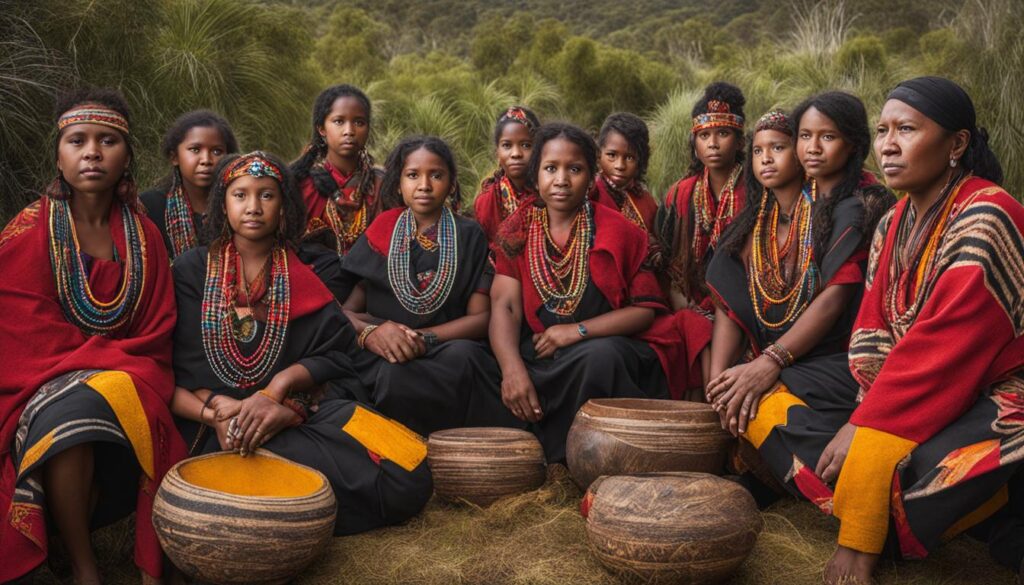
The use of palawa kani is gradually expanding, reflecting a growing recognition and appreciation for the uniqueness and importance of the language within the wider Tasmanian community. As more people engage with palawa kani and embrace its significance, it plays a vital role in fostering cultural preservation, pride, and a sense of belonging.
Using palawa kani Today
In contemporary Tasmania, palawa kani is finding its place in various aspects of everyday life. This revived language is not only being used in educational settings, where it provides a deeper connection to Tasmanian Aboriginal culture, but also in ceremonies and official functions, where it adds a sense of authenticity and reverence.
Even popular media has embraced palawa kani, as evidenced by its inclusion in the award-winning animated television series, Little J and Big Cuz. This inclusion helps to bring the language to a wider audience and showcases its importance in preserving and celebrating the rich heritage of Tasmania’s Aboriginal community.
“Palawa kani is more than just a language; it is a symbol of our resilience, revival, and cultural resurgence. Its use in various aspects of our daily lives ensures that the language remains vibrant and alive.”
In addition to its use in traditional settings, palawa kani is also being utilized as a form of protest. Recently, a television advertisement spoken entirely in palawa kani was released, drawing attention to the reopening of four-wheel drive tracks in a remote conservation area. This unique form of protest highlights the power of language as a tool for advocacy and brings attention to important issues while promoting the use of palawa kani in contemporary communication.
As awareness and understanding of the Tasmanian Aboriginal cultural language program grow, palawa kani is gradually becoming more recognized and accepted in the wider Tasmanian community. Its presence not only enriches the linguistic landscape but also fosters a greater appreciation for the cultural heritage and contributions of the Tasmanian Aboriginal people.
Examples of palawa kani in Use:
- Education: Incorporating palawa kani in educational settings provides students with a unique opportunity to learn about the history and culture of Tasmania’s Aboriginal community.
- Ceremonies: Using palawa kani in ceremonies adds authenticity and a sense of belonging, allowing participants to connect with their heritage.
- Official Functions: The inclusion of palawa kani in official events acknowledges the importance of the Tasmanian Aboriginal cultural language program and the significance of Aboriginal culture in the wider community.
- Media and Entertainment: The use of palawa kani in television series, such as Little J and Big Cuz, promotes awareness and interest in the language among a broader audience.
Dual Naming and Language Preservation
One significant approach to preserving and honoring Indigenous languages and cultural heritage is through the practice of dual naming. This involves assigning both traditional Indigenous names and colonial names to important landmarks and places. By incorporating traditional names alongside colonial names, we can educate the broader community about the rich Aboriginal history of the land and underscore the importance of language preservation.
In Tasmania, there are notable examples of dual naming. One such landmark is Mt Wellington, which is also known by its traditional Indigenous name, kunanyi. Similarly, Asbestos Range National Park has been given the dual name, larapuna. These dual-named places serve as powerful reminders of the rich cultural heritage embedded in the land.
The use of traditional Indigenous names has profound implications for language revival and the reclamation of Indigenous names for significant places. By employing traditional names in everyday speech and public discourse, we provide a platform for the revitalization of Indigenous languages, such as the palawa language spoken by the Tasmanian Aboriginal community.
The use of traditional names alongside colonial names helps to bridge the gap between the past and present, fostering a deeper connection to country and acknowledging the enduring presence of the Tasmanian Aboriginal community.
Furthermore, dual naming contributes to the documentation and preservation of Indigenous languages. It serves as an important mechanism for language maintenance, ensuring that the palawa language and other Indigenous languages are passed down to future generations.
| Benefits of Dual Naming | Examples of Dual Naming in Tasmania |
|---|---|
|
|
Through the practice of dual naming, we acknowledge the importance of Indigenous languages and work towards their preservation and revitalization. By embracing traditional names and fostering a deep respect for Aboriginal culture, we can ensure the continued vibrancy and relevance of the palawa language and other Indigenous languages in Tasmania.
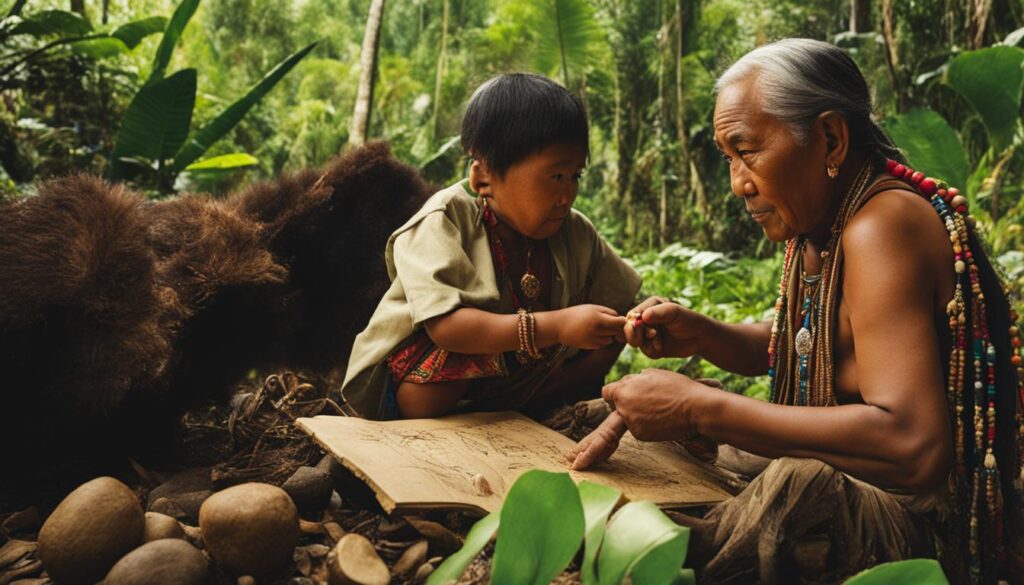
The Importance of Truth-telling and Renaming Massacre Sites
Advocates within Aboriginal communities in Tasmania, including the Bundaberg community, are calling for the renaming of locations where brutal massacres of Aboriginal people occurred. Currently, many of these places bear the names of the very individuals who were responsible for controlling and removing Indigenous people, such as the protectors or inspectors of Aborigines. Renaming these massacre sites and providing proper historical context allows for truth-telling and recognition, fostering a more accurate and respectful understanding of Aboriginal history, culture, and connection to the land.
This process of renaming massacre sites acknowledges the pain and trauma experienced by Aboriginal people and ensures that their stories are heard and remembered. It is an act of reclaiming and honoring the heritage of Aboriginal Tasmanian culture, language, and heritage. By recognizing the atrocities committed and reframing the narrative surrounding these sites, we can contribute to healing and reconciliation.
The renaming of massacre sites is an essential step towards acknowledging the truth of our history and creating a more inclusive and respectful society. It allows us to confront the uncomfortable realities of the past and work towards a future that values and respects the Aboriginal Tasmanian community and their rich cultural heritage.
Renaming these sites also serves as a powerful reminder of the ongoing journey towards justice and reconciliation. It encourages all Australians to educate themselves about the dark chapters of our past and work together to build a better future for all. By actively engaging in truth-telling, we can create a society that embraces diversity, promotes understanding, and values the importance of preserving and revitalizing Aboriginal Tasmanian culture and language.
The image above represents the rich and diverse Aboriginal Tasmanian culture, which encompasses vast knowledge systems, art, spirituality, kinship, and connection to the land. It is important to recognize and preserve this cultural heritage for future generations.
The Challenges of Renaming Landscapes
The process of renaming landscapes in Australia can be met with resistance and challenges. In Tasmania, the introduction of native title laws in 1993 aided the identification of traditional place names. However, the debate over dual naming and the recognition of Aboriginal voices in the process has become politicized.
The Tasmanian Aboriginal Centre, with over 30 years of involvement in language research and place naming, has played a significant role in preserving the indigenous language of Tasmania and the Tasmanian Aboriginal community. They have worked tirelessly to document and restore the cultural heritage of the region.
Quote: “The preservation and revitalization of our language is crucial for the survival of our culture and the connection to our land.” – Tasmanian Aboriginal Centre
Despite these efforts, recent changes to the dual naming policy by the Liberal government have sparked disagreement and contested naming proposals. This has highlighted the challenges that can arise when attempting to rename landscapes and recognize the importance of indigenous languages.
Recognizing Aboriginal Voices
One of the significant challenges in renaming landscapes is ensuring the recognition of Aboriginal voices in the process. Aboriginal languages, such as the Aboriginal Tasmanian language, hold immense cultural and historical significance, and it is essential that these languages are acknowledged and celebrated.
The involvement of the Tasmanian Aboriginal community in the renaming process is vital to ensure the accuracy and authenticity of the names chosen. By actively including the Aboriginal community, we can create a more inclusive and respectful approach to renaming landscapes.
Dual Naming and Indigenous Language Preservation
The concept of dual naming, where traditional Aboriginal names are used alongside colonial names, has gained traction as a way to preserve and honor indigenous languages and cultural heritage. Dual naming allows for the recognition of Aboriginal history and helps educate the broader community about the significance of indigenous languages in Tasmania.
Quote: “Dual naming helps us reclaim our language and reestablish our connection to the land.” – Tasmanian Aboriginal Centre
Through dual naming, not only are the indigenous names preserved, but it also provides an opportunity for language revival and the reclaiming of indigenous names for significant places. This process contributes to a more accurate understanding of Aboriginal history, culture, and the deep connection between the Tasmanian Aboriginal community and the land.
The Way Forward
| Challenges | Solutions |
|---|---|
| Resistance to renaming | Engage in open and respectful dialogue to address concerns and find common ground. |
| Recognition of Aboriginal voices | Actively involve the Aboriginal community in the renaming process and decision-making. |
| Political sensitivities | Promote bipartisan support and understanding of the importance of indigenous languages and culture. |
The challenges of renaming landscapes in Tasmania demand ongoing collaboration, empathy, and a commitment to creating an inclusive society that values the indigenous language of Tasmania and the Tasmanian Aboriginal community. By working together, we can ensure the preservation and celebration of Aboriginal culture and heritage for generations to come.
Aboriginal Languages and the Reclamation of Culture
The revival and preservation of Aboriginal languages are critical to the reclamation and revitalization of Aboriginal culture. Through language revival efforts, we are reclaiming our cultural heritage and celebrating the rich linguistic traditions that have shaped our identity.
One significant language that is being revitalized is palawa kani, a reconstructed language based on the surviving remnants of the original Tasmanian languages. The use of palawa kani in various contexts, such as education, ceremonies, and official functions, has helped to bring our language back to life and strengthen our connection to our ancestors.
In the words of Theresa Sainty, a prominent advocate for Indigenous language preservation, “Language is not just a means of communication; it is a vessel for our cultural knowledge and worldview. By reclaiming our language, we are reclaiming our culture and our place in the world.”
Language documentation and preservation efforts have also been supported by native title laws and research into historical boundaries and language use. These initiatives have aided in the identification and preservation of traditional place names and boundaries, which further contribute to the reclamation of our cultural heritage.
The Role of Language Revival in Cultural Reclamation
Language is not merely a tool for communication; it is a reflection of our unique cultural identity. By reviving our ancestral languages, we are not only preserving linguistic diversity but also reclaiming and revitalizing our cultural practices, stories, and traditions.
Language revival efforts play a crucial role in fostering a sense of pride and belonging among Aboriginal communities. When we can communicate in our traditional languages, we feel a deep connection to our ancestors and a renewed understanding of our place in the world.
Importance of Language in Aboriginal Cultural Practices
Aboriginal languages are deeply intertwined with our cultural practices—stories, songs, dances, and ceremonies. These languages hold the key to unlocking the knowledge passed down through generations and enable us to maintain our cultural traditions.
Recognizing the importance of language, our community has integrated palawa kani into various aspects of our lives, from educational programs to official functions. By using our language in these contexts, we are preserving and promoting our cultural heritage while inspiring future generations to embrace their Aboriginal identity.
Conclusion
Efforts to revive and preserve the Palawa Language are an essential part of the cultural survival and revitalization of the Tasmanian Aboriginal community. By reclaiming and celebrating the Palawa Language, we are honoring the rich history, culture, and connection to the land of the Tasmanian Aboriginal people.
Through the use of palawa kani and the recognition of traditional place names, we gain a more accurate understanding of Aboriginal history and culture. These efforts not only contribute to the preservation of Tasmanian Aboriginal heritage but also help to educate the broader community about the significance of Indigenous languages and their importance in reclaiming cultural identity.
While challenges and debates exist surrounding language revival and the renaming of landscapes, it is important to continue these ongoing efforts. By embracing and promoting the use of palawa kani, we can create a more inclusive and respectful society that acknowledges and values the diverse linguistic heritage of Australia. Together, we can ensure the enduring legacy of the Palawa Language and support the Tasmanian Aboriginal community in their cultural revitalization journey.
FAQ
What is the palawa language?
The palawa language, also known as palawa kani, is a reconstructed language based on remnants of the original Tasmanian Aboriginal languages. It is used by the Tasmanian Aboriginal community for educational purposes, ceremonies, official functions, and cultural revival.
How many Tasmanian Aboriginal languages were spoken before British colonization?
Between eight and 12 different languages were spoken by Tasmanian Aboriginal people before British colonization. These languages were recorded in colonial documents and through the efforts of linguists like George Augustus Robinson.
How is the palawa kani language being used today?
The palawa kani language is being used in various contexts, including education, ceremonies, official functions, and even in award-winning animated television series like Little J and Big Cuz. It is also being used as a form of protest in advocating for the recognition and preservation of Tasmanian Aboriginal culture.
What is dual naming?
Dual naming is the practice of giving places both traditional and colonial names. It allows for the preservation and honor of Indigenous languages and cultural heritage. Some significant landmarks in Tasmania, such as Mt Wellington and Asbestos Range National Park, now have dual names.
Why is truth-telling and renaming massacre sites important?
Renaming massacre sites and properly contextualizing their histories is important for truth-telling and recognition. It contributes to a more accurate and respectful understanding of Aboriginal history and culture, allowing for the reclaiming of Indigenous names and the honoring of those who suffered.
What are the challenges of renaming landscapes?
The process of renaming landscapes in Australia can be met with resistance and challenges. In Tasmania, the debate over dual naming and the recognition of Aboriginal voices in the process has become politicized. However, ongoing efforts by the Tasmanian Aboriginal Centre aim to preserve traditional place names and boundaries.
How do Aboriginal languages contribute to the reclamation of culture?
The revival and preservation of Aboriginal languages, such as palawa kani, play a crucial role in reclaiming and revitalizing Aboriginal culture. Through language revival efforts and the recognition of traditional place names, Aboriginal communities are able to reclaim their cultural heritage.
